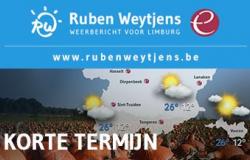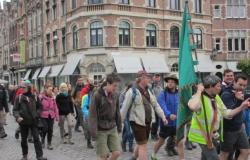Hotels such as the Parkroyal on Pickering Street or the Pan Pacific Orchard are also richly green. And every new construction must meet strict ecological regulations. In this way, the concrete is slowly but surely making way for buildings with green ecosystems on the facades.
Today, a third of Singapore’s territory is already taken up by green space: everywhere you see the urban jungle, which is also extremely well cared for. Nature in Singapore, tamed or wild, decorative and often hanging, delivers a good dose of oxygen. By 2030, the city wants everyone to have a park within a ten-minute walk.
One of those parks is on the UNESCO World Heritage List: the botanical garden just a few minutes from Orchard Road, the iconic shopping street named after the plantations that lined the avenue in the 1940s. What once started as a British tropical plant garden with a colonial character, founded in 1859, is today a modern and globally renowned garden of 75 hectares with a scientific research centre.
It is also the only botanical garden in the world that is open to the public every day from 5am to midnight – except for the orchid section.

Antwerp x 3.5
The many parks are the best proof that Singapore has viewed everything through a sober lens, clear and ambitious at the same time, since its independence in 1965. And that has everything to do with its history. Flashback to the nineteenth century.
Singapore’s favorable geographical location is not lost on Sir Thomas Stamford Raffles. The British took control of the area in 1819 as a counter to the commercial dominance of the Dutch in the region. The port city, which mainly lives from fishing, is quickly growing into a crucial junction between the West and East. During the Second World War, the region fell into the hands of Japan, then returned to British rule and later became an autonomous colony in the Commonwealth. Until Singapore merges with Malaysia, a union that is short-lived due to all kinds of political disputes.
read more
24 destinations for 2024 | Luxury in Peru and 4x4ing in Botswana
In 1965, Singapore (named after ‘Singapura’, ‘city of the lion’) became independent for the first time in almost 150 years. The city-state has to start from scratch with just about everything. By the way, the territory of the newly independent city-state is limited: just over 720 square kilometers, some of which are reclaimed from the sea. Three and a half times bigger than Antwerp, but smaller than London. The Republic of Singapore, which consists of 64 islands, must therefore look for other assets than just its natural resources. Lee Kuan Yew, the very first prime minister, realizes this: he is the great architect of the transformation that elevated the small city-state into one of the fastest growing and most prosperous economies in Asia. He rules with an iron fist until 1990, and sets the rules. Whether it is trade, finance, technology or tourism, Singapore skimps on nothing and quickly becomes one of the four Asian Tigers, together with South Korea, Hong Kong and Taiwan: states that achieved unprecedented economic growth after the Second World War. experience growth.

Colorful ‘shophouses’
Due to its history, but also and especially due to its location, Singapore is becoming a real melting pot of ethnicities that still live together harmoniously. The key word is coexistence: none of the population groups is dominant. Ethnic neighborhoods such as Chinatown, Little India and Kampong Glam (whose mosque is reminiscent of the one in the animated film ‘Aladdin’) have retained their authenticity to this day.

Of the many communities that contributed to the explosion of the city, the Peranakan in particular played an important role. They arrived between the fifteenth and seventeenth centuries, married locals and adopted some customs. This new mix with traditions from the Chinese empire gave birth to a colorful culture whose heritage is preserved in the Peranakan Museum, but also in the streets of Katong (Joo Chiat Road).
read more
4 experiences of a lifetime | On land, at sea and in the air
Although the city mainly grew in height, traditional houses and colorful ‘shophouses’ are also in Singapore’s DNA. Those shophouses were built between 1840 and 1960, with a double door that is – typically – a long way from the street. On the ground floor there is a commercial space, the others are occupied. The beauty of the facades remains a silent witness to the success and wealth of the Peranakan families. The low architecture of the shophouses, particularly popular with Singaporeans such as in the hip Tiong Bahru Market district, invites you to linger for a cup of coffee or a kaya toast, a slice of bread with coconut jam. And as if the government wants to cement social cohesion, there are four official languages: English, Malay, Mandarin and Tamil. To avoid any form of discrimination and cherish multiculturalism.

Longest swimming pool in the world
Singapore is one of the most densely populated countries in the world after Monaco. The lack of space is chronic. With a population of six million, the government has been pursuing a vertical construction policy for years, in a very well-considered manner. In Europe, social housing does not have the best reputation, but here social housing or so-called ‘HDBs’ are very popular. Nearly eighty percent of Singaporeans own an apartment, or rather, they have a 99-year lease with the Housing & Development Board, the government agency responsible for building planning, construction, housing allocation, its maintenance and renovation. With success, because they have never heard of a ‘housing crisis’ here.
HDBs are also built in such a way that social life develops around the common areas, such as in the Pinnacle@Duxton, a building consisting of several fifty-storey towers. These are connected by ‘sky bridges’, each five hundred meters long, on the 26ste and 50ste floor. You pay six Singapore dollars for access to the lifts and before you know it, you are served a special view right at the top: the city center, 360 degrees around.
It is certainly less busy than in the Marina Bay Sands shopping and hotel complex, the architectural symbol that put Singapore on the map almost fifteen years ago. The entire district has been reclaimed from the sea and the complex consists of three towers of 55 floors. At the top there is plenty of food for Instagram, such as the longest swimming pool in the world, 150 meters, designed by Denniston, the office of Belgian architect Jean-Michel Gathy.

Directly from Brussels
The public transport network is also imbued with the same well-thought-out approach: it leads to significantly fewer road users. So no traffic jams or millions of scooters here, as we know from most Asian countries. The traffic in Singapore is more reminiscent of a car-free Sunday in Brussels.
Changi Airport is also a model of efficiency. You will find a glass dome, the Jewel Changi, with a forty-meter high waterfall, three floors of boutiques, contemporary art galleries, a hotel too, a free cinema or even slides for those who want to avoid the stairs. But also ATMs that dispense different currencies and even gold bar machines.
Everything has been done to ensure that every step – from checking in luggage to customs and checking hand luggage – runs as quickly and smoothly as possible. From April 6, Singapore Airlines will connect Brussels with Changi Airport directly in about eleven hours. Perfect for a city trip to the city that has only one motto: to lead by example.






